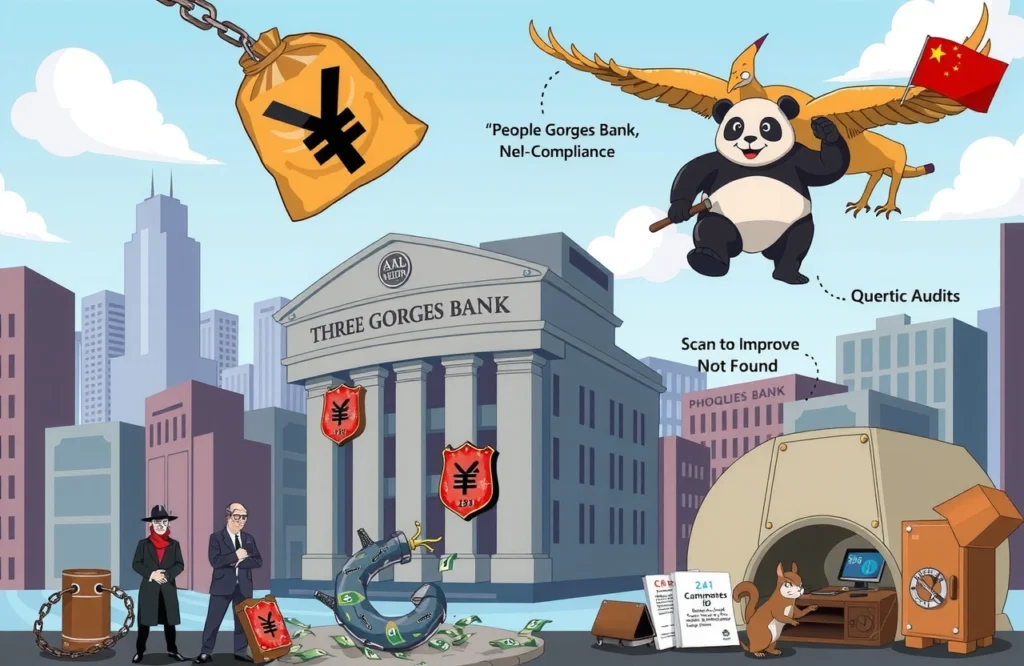The Regulatory Thaw Igniting Stablecoin Disruption
The recent signing of the GENIUS Act by the President has fundamentally reshaped America’s financial landscape, establishing a regulatory framework for stablecoins that Bank of America Merrill Lynch (BofA) warns will catalyze their disruptive impact on traditional banking within 2-3 years. This legislative milestone—coupled with progress on the CLARITY Act dividing SEC and CFTC jurisdiction—marks a pivotal shift from regulatory uncertainty to tangible infrastructure development. Financial institutions now confront a stark reality: stablecoins are transitioning from speculative assets to credible challengers of established banking models for deposits and payments.
The GENIUS Act Framework
The legislation establishes core requirements for stablecoin issuers including mandatory reserves, monthly attestations, and segregation of customer funds—creating foundational trust previously lacking in cryptocurrency markets. Crucially, it legitimizes dollar-pegged digital assets at federal level while preserving state-level innovation. Treasury Department oversight now replaces ambiguity, enabling institutional participation previously deterred by compliance risks.
Synchronized Regulatory Clarity
The advancing CLARITY Act complements this framework by delineating regulatory boundaries: SEC overseeing investment-like crypto assets while CFTC regulates commodity-based tokens. This jurisdictional clarity solves longstanding gaps where assets like algorithmic stablecoins fell between regulatory cracks. Together, these measures create unprecedented stabilitycoin adoption conditions.
Quantifying Stablecoins’ Disruptive Impact
BofA’s analysis projects immediate and systemic consequences from this regulatory shift, with stablecoins’ disruptive impact materializing across banking fundamentals—particularly deposit stability and payment revenue streams that generate over $200 billion annually for U.S. banks.
Short-Term Treasury Market Transformation
In the immediate 12-24 month horizon, BofA forecasts $250–$750 billion inflow into stablecoins from:
– Retail users migrating from traditional bank accounts
– Corporations utilizing stablecoins for treasury operations
– Institutional investors entering crypto through regulated gateways
This capital migration will disproportionately boost demand for short-dated Treasury bills as reservable assets—potentially compressing yields on 3–6 month government securities by 10–15 basis points according to bank economists.
Medium-Term Banking Pressures
By year three, BofA predicts stablecoins’ disruptive impact will manifest through:
– Loss of low-cost transaction deposits: Estimated $300B displacement from retail banking
– Payment fee erosion: Up to 30% compression in card transaction and wire transfer revenues
– Liquidity fragmentation: New competition for bank-held operating cash reserves
These pressures compound as stablecoins leverage blockchain efficiencies: 24/7 settlement at fractions of ACH network costs threatens banks’ monopoly on money movement.
Banking Sector’s Strategic Quandary
While major financial institutions publicly acknowledge stablecoins’ disruptive impact, BofA’s report reveals fundamental divergence between strategic positioning and real-world deployment—especially regarding domestic versus international opportunities.
The Domestic Skepticism Divide
Despite announcing stablecoin initiatives, bank executives express profound reservations about US adoption velocity:
– JPMorgan CEO Jamie Dimon: “Why would consumers shift when instant Zelle payments work?”
– Citi CFO Mark Mason: “Crypto-fiat conversion costs approaching 7% negate efficiency claims”
– Bank of America Research: Consumers still prefer FDIC-backed deposits for primary holdings
This skepticism manifests in risk-averse domestic strategies favoring tokenized bank deposits (like JPMorgan’s JPM Coin) over true stablecoins.
Cross-Border Payments Consensus
Bankers exhibit rare alignment regarding international payments as stablecoins’ killer application:
– Remittance corridors like US-Mexico where traditional costs reach 5–7%
– B2B vendor payments across ASEAN manufacturing networks
– Real-time treasury operations for multinational corporations
Fifth Third Bank CEO Tim Spence describes this as “greenfield opportunity generating $12B new revenue pool”, leveraging stablecoins to bypass legacy correspondent banking layers.
Institutional Adoption Pathways
The BofA report maps distinct enterprise stablecoin adoption vectors taking shape across financial sectors—each representing competitive threats to established bank revenue models.
Corporate Treasury Transformation
Leading the adoption curve, Fortune 500 companies now utilize stablecoins for:
– Real-time intercompany settlements across borders
– Dynamic liquidity management via programmable treasuries
– Supply-chain finance automation through smart contracts
“Within 18 months,” predicts BofA Global Treasurer, “digital-asset treasuries will match traditional cash allocations at S&P 500 firms.”
Capital Markets Innovation
Bond tokenization pilots at institutions like Franklin Templeton demonstrate stablecoins’ disruptive impact on capital formation:
– Fractionalized commercial paper issuance
– Intraday repo markets bypassing DTCC settlement
– Algorithmic FX hedging via stablecoin pairs
These innovations could disintermediate $26B in traditional capital markets fees by 2027.
Banking Sector Response Tactics
Facing stablecoins’ disruptive impact, BofA identifies three strategic approaches emerging across US banking:
1. Ecosystem Partnerships
Banks like BNY Mellon leverage custody infrastructure as stablecoin enablers:
– Circle (USDC issuer) reserves custody
– Ripple RLUSD collateral management
– Fireblocks integration for institutional wallets
This ‘picks-and-shovels’ strategy builds fee revenue without balance sheet exposure.
2. Deposit Tokenization
JPMorgan Chase’s JPM Coin template creates digital claims against existing deposits—countering deposit flight while offering blockchain benefits. State Street’s upcoming tokenized money market fund services extend this defensive innovation.
3. Regulatory Engagement
Banks actively shape interpretations via:
– Defined benefit requirements exceeding GENIUS minimums
– Lobbying for equivalence between tokenized deposits and FDIC protection
– SEC filings establishing bank coin exemptions from securities registration
Collectively, these strategies aim to flank pure stablecoin challengers.
Bank-by-Bank Positioning Analysis
Based on Q2 earnings disclosures and management commentary, BofA maps institution-specific vulnerability to stablecoins’ disruptive impact:
Global Systemically Important Banks (G-SIBs)
– JPMorgan Chase (JPM): Developing deposit token JPMD while hedging through custody services
– Bank of America (BAC): Targeting B2B cross-border corridors via partnerships
– Citigroup (C): Building tokenization infrastructure across four business lines
– Goldman Sachs (GS): Awaiting regulatory clarity before deployment
– Morgan Stanley (MS): Developing crypto prime brokerage as adoption bridge
– BNY Mellon (BK): Dominating digital asset custody for stablecoin issuers
Super-Regional Banks
– U.S. Bancorp (USB): Preparing P&N stablecoin prototype
– PNC Financial (PNC): Building treasury services integration
– Fifth Third (FITB): Prioritizing international payment disruption
– Truist (TFC): Focusing on merchant stablecoin acceptance
Regional/Local Banks
Most exposed due to:
– Heavy reliance on transaction deposit franchises
– Limited R&D budgets for tokenization
– Inability to scale custody/escrow services
BofA recommends defensive mergers for institutions under $50B assets.
The Path Ahead for Banking Stability
With stablecoins’ disruptive impact now inevitable per BofA projections, banking’s core stability mechanisms face necessary evolution:
Deposit Insurance Adaptation
The FDIC must address whether:
– Stablecoin reserves qualify for pass-through coverage
– Tokenization platforms become FDIC-insured chartered entities
– New $250,000 equivalent protections emerge for digital wallets
Regulatory consultations on these questions accelerate this quarter.
Liquidity Framework Reformation
Basel III modifications underway address:
– Treatment of stablecoin reserves as HQLA
– Duration mismatches in stablecoin collateral pools
– Settlement finality equivalence for blockchain transactions
These changes will dictate how banks incorporate stablecoins onto balance sheets.
Systemic Risk Containment
The Financial Stability Oversight Council now monitors:
– Stablecoin reserve composition thresholds
– Interoperability risks across blockchain networks
– Run-risk modeling for algorithmic stablecoins
Early warning systems are being deployed ahead of projected 2026 adoption spikes.
Embracing Financial Architecture 3.0
The BofA report concludes that stablecoins’ disruptive impact ultimately accelerates banking digitization. Rather than fighting disintermediation, forward-thinking institutions will harness dollar-on-blockchain advantages to:
– Engineer new capital-efficient settlement layers
– Monetize programmable finance functionality
– Capture emerging market payment corridors
– Integrate with CBDC infrastructure
Financial executives should immediately:
1. Create cross-functional stablecoin task forces
2. Pilot deposit tokenization with enterprise clients
3. Develop API connections to regulated stablecoin networks
The institutions treating stablecoins as catalysts versus competitors will thrive in Financial Architecture 3.0.




